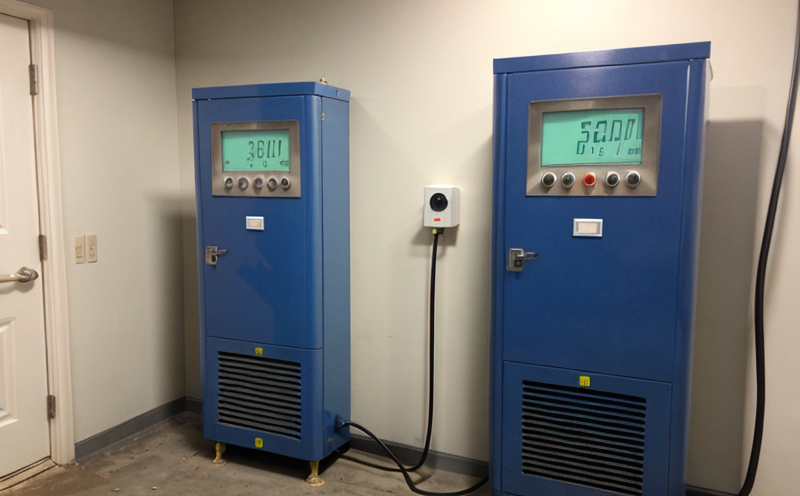EN 689 Worker Inhalation Exposure Limit Compliance Testing
The European standard EN 689 specifies a method of testing to ensure compliance with worker inhalation exposure limits. This is crucial for industries where hazardous gases and particles may be present, particularly in mining environments. The primary objective of this test is to verify that the ventilation systems and gas monitoring equipment employed in these sectors meet stringent safety requirements as outlined by EN 689.
The testing procedure involves several key steps. Initially, a representative sample of air within the working area must be collected using appropriate sampling techniques. This ensures that the sample accurately reflects the exposure conditions experienced by workers over time. The sampled air is then analyzed for specific contaminants such as carbon monoxide (CO), hydrogen cyanide (HCN), and other toxic gases relevant to mining operations.
The analysis can also include particulate matter, which may contain hazardous materials like asbestos or silica dust. Once the samples have been collected, they are subjected to rigorous analytical methods that comply with international standards such as ISO 13528 for gas detection and EN 482 for particle size distribution.
During this process, it is essential to ensure that all sampling devices used adhere strictly to the specifications provided in EN 689. This includes maintaining proper calibration of instruments throughout the testing period to guarantee accurate measurement results. Additionally, any changes or updates in local regulations should be incorporated into the testing protocol to maintain compliance.
The final step involves comparing the measured concentrations against the permissible exposure limits (PELs) set forth by EN 689 and other relevant guidelines like OSHA PELs for US-based operations. If the results indicate non-compliance, corrective actions must be taken promptly to address any deficiencies identified during testing.
For industries such as mining where worker safety is paramount, adhering strictly to these standards helps protect employees from potential health risks associated with prolonged inhalation of harmful substances. By implementing EN 689 compliance testing regularly, organizations can demonstrate their commitment to maintaining high levels of occupational hygiene and ensuring a safe working environment.
Why It Matters
The importance of EN 689 worker inhalation exposure limit compliance cannot be overstated. In sectors like mining where hazardous gases are common, ensuring that ventilation systems effectively manage these risks is critical for maintaining both productivity and safety standards.
- Reduces Health Risks: By monitoring and controlling the levels of harmful contaminants in the air, EN 689 testing helps reduce the likelihood of respiratory diseases among workers. This not only improves individual health but also contributes to overall workforce performance.
- Enhances Reputation: Adhering to international standards like EN 689 enhances an organization's reputation as a leader in occupational safety and environmental responsibility. Such adherence can attract more clients and investors interested in sustainable practices.
- Lowers Operational Costs: Effective ventilation systems and proper monitoring reduce the occurrence of accidents, thereby lowering insurance premiums and medical costs associated with workplace injuries or illnesses.
In conclusion, embracing EN 689 compliance testing is essential for any mining operation seeking to balance operational efficiency with stringent safety protocols. It serves as a vital component in safeguarding employee well-being while fostering a culture of continuous improvement within the organization.
Quality and Reliability Assurance
To maintain consistent quality and reliability, our laboratory adheres strictly to the methodologies prescribed by EN 689. Our team of experts ensures that every aspect of the testing process—from sample collection to final analysis—meets the highest standards.
We utilize state-of-the-art equipment calibrated according to internationally recognized guidelines, ensuring precise measurements and accurate data interpretation. Regular calibration checks are performed to maintain instrument accuracy over time. Our technicians undergo continuous training to stay updated on the latest advancements in laboratory practices.
The integrity of our testing processes is further reinforced through stringent quality assurance measures. Each test batch undergoes rigorous internal audits conducted by independent reviewers who verify compliance with EN 689 requirements. Any discrepancies or deviations are promptly addressed, ensuring reliable outcomes that can be confidently relied upon by clients.
By upholding these strict protocols, we provide mining companies and other relevant entities with accurate and trustworthy data regarding worker inhalation exposure limits. This commitment to excellence enables our customers to make informed decisions about their ventilation systems and gas monitoring solutions, ultimately contributing to safer working environments.





